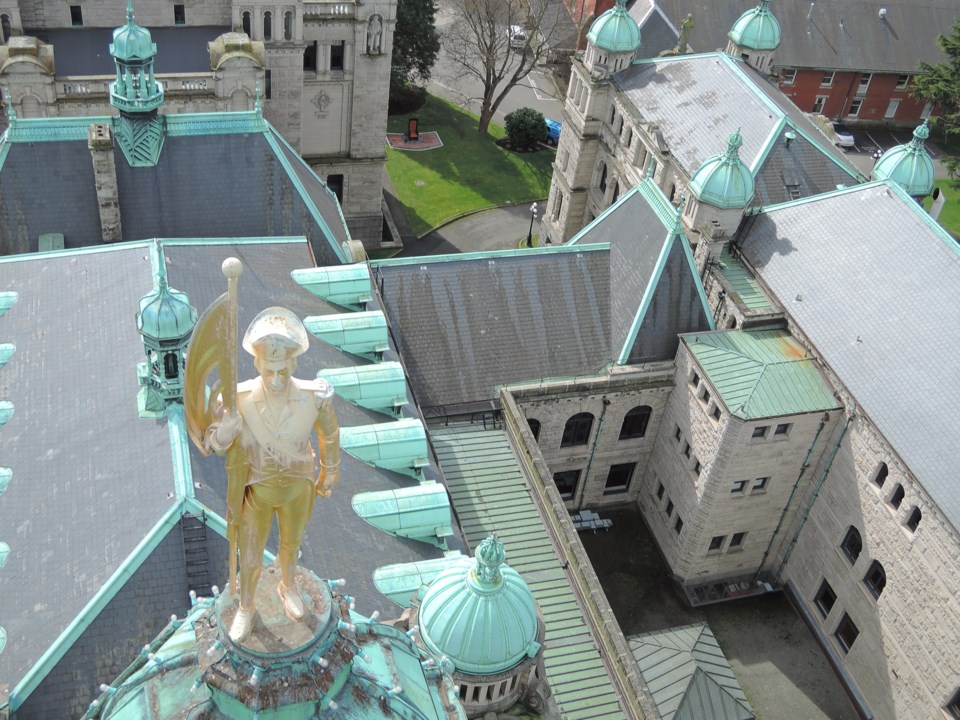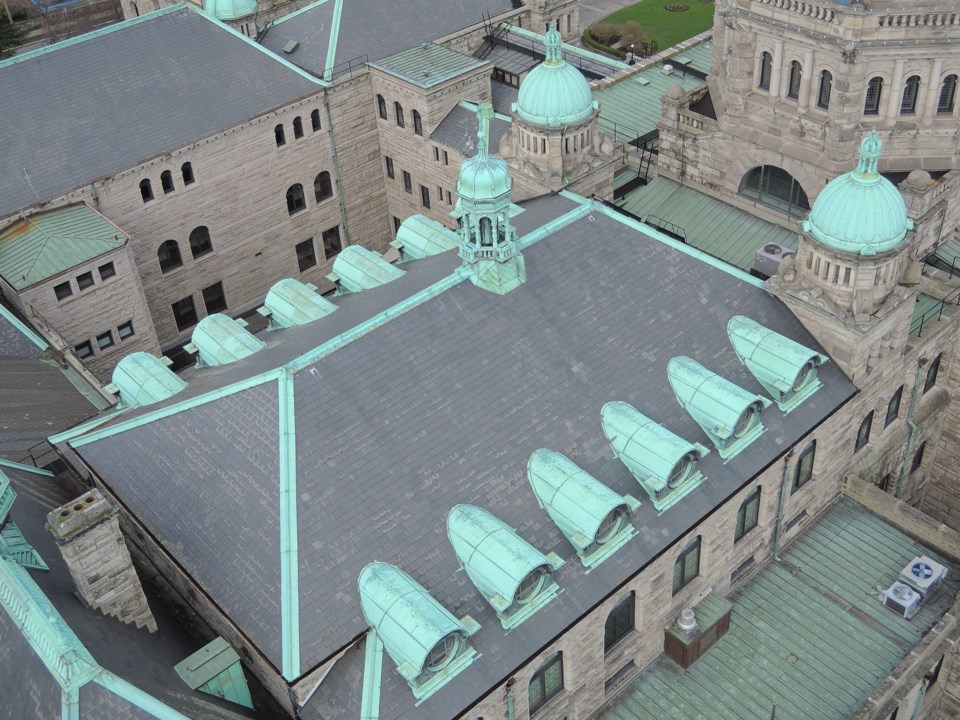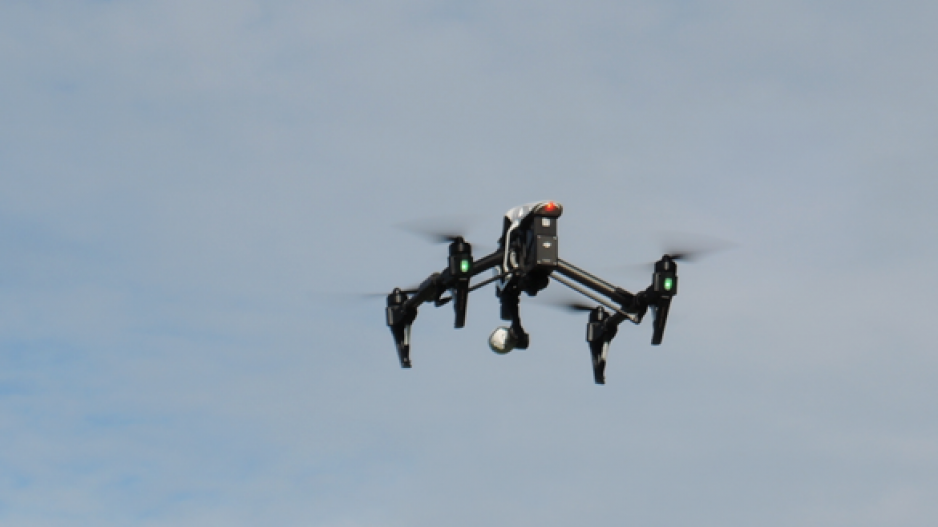When the British Columbia government wanted to inspect the roof of the most important building in the province, it called on an innovative pilot who launched a drone above the British Columbia legislature.
The contract to Victoria Aerial Survey revealed the startling versatility of unmanned aerial vehicle systems – drones – as a roof inspection tool for commercial property managers and roof inspection companies.
“It was an important job for us, and our first roofing contract,” said licensed pilot David Carlos, who founded Victoria Aerial Survey two years ago. He explained that the government’s property manager wanted to check on the gold-leafed statue of Captain George Vancouver, the iconic copper dome and the general roof condition atop the main legislative building. Like many property managers, they also likely wanted to avoid the onerous safety regulations, access permission and potential roof damage that could result in sending a team of inspectors onto the sloped roof of the 116-year old structure.
Instead, Carlos carefully guided a powerful multi-rotor drone equipped with video and a high-definition camera to take detailed photos of every part of the roof.
 The cameras showed, for example, that what was thought to be bird droppings on the seven-foot-high Captain Vancouver statue was actually base metal showing through the aging gold leaf. The property managers now also have clear and close-up photos of the entire roof and the dome, which has some structural issues.
The cameras showed, for example, that what was thought to be bird droppings on the seven-foot-high Captain Vancouver statue was actually base metal showing through the aging gold leaf. The property managers now also have clear and close-up photos of the entire roof and the dome, which has some structural issues.
Carlos, one of the few commercial multi-rotor drone operators in the province, said most of his business comes from the real estate industry, but he believes the unmanned flying cameras are uniquely suited for roof inspections.
“They can fly high or low, they can hover and they provide high-resolution photos or videos,” he explained.
(Image: Inspecting the roof, dome and Captain George Vancouver statue on the roof of the British Columbia Legislature was the first roofing inspection job for Victoria Aerial Survey)
Any pilot who flies a multi-rotor for commercial use requires a Special Flight Operators Certificate under Canadian air regulations of Transport Canada and the applicant must prove he or she has the experience and the expertise to handle the powerful drones. 
Using drones for visual roof inspections offers a number of advantages compared to using Google earth or airplanes, Carlos believes. First of all, the drones are inexpensive – he estimates a commercial roof inspection by drone would cost around $300 – allow better visuals than satellite or airplane images and avoid the safety and access concerns of putting people onto the roof. “[Drones] are cheaper, safer and can get way closer,” Carlos said.
But nothing replaces a professional inspector getting up on the roof, said Sean Lang, president and senior consultant of Inter-Provincial Roof Consultants Ltd. of Surrey.
“You cannot see the quality of the membrane seal at a drain, or find nails poking out of shingles unless you actually go on the roof and look for the issues,” Lang said.




